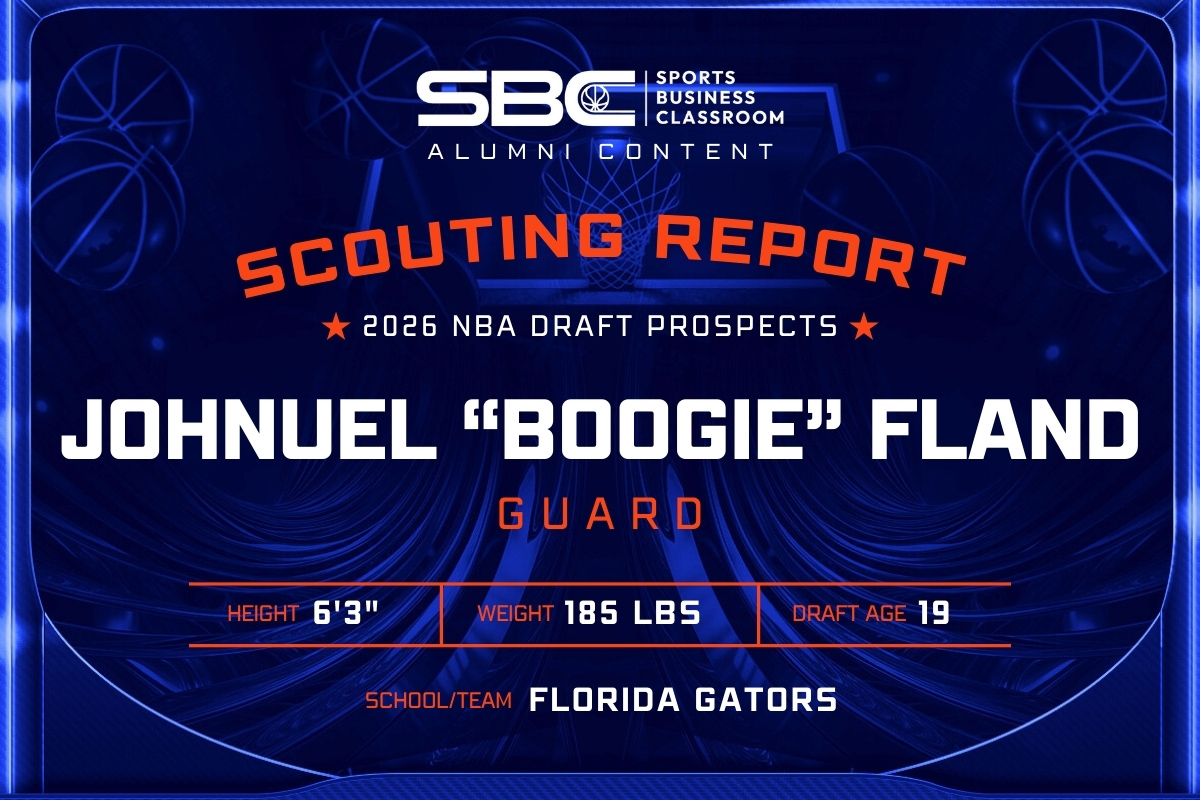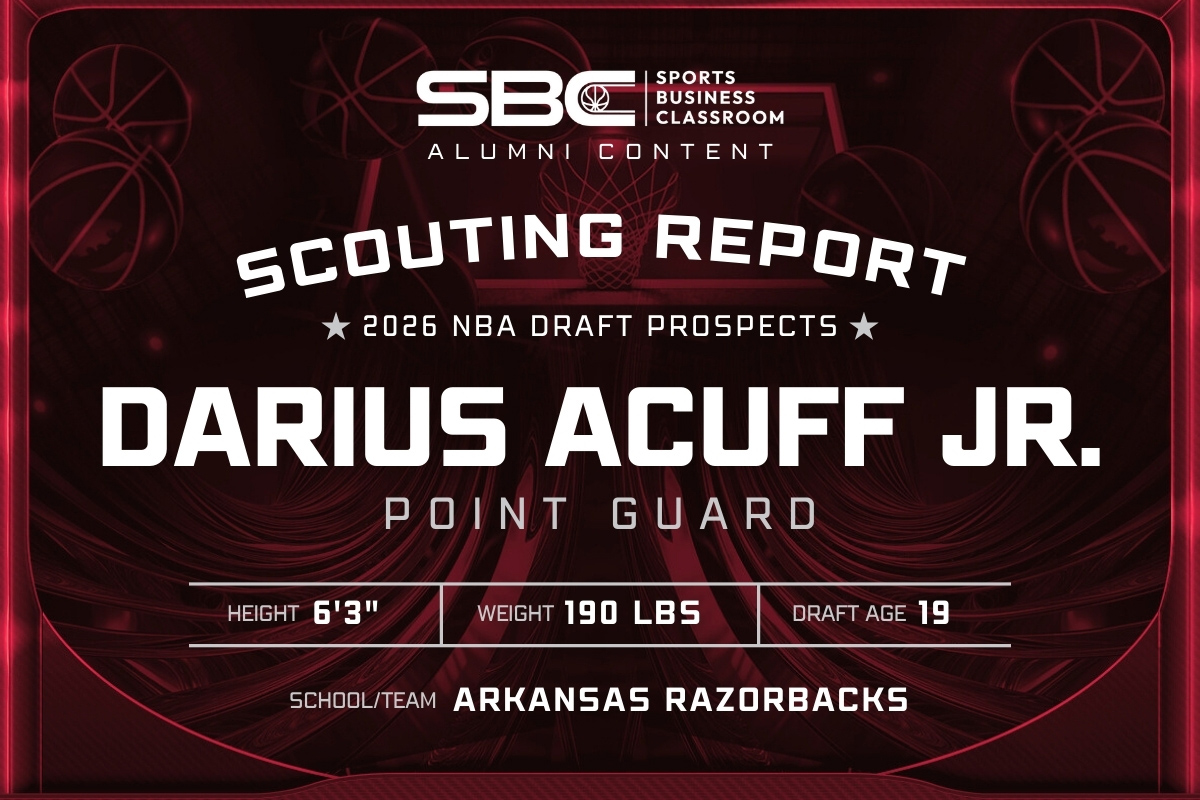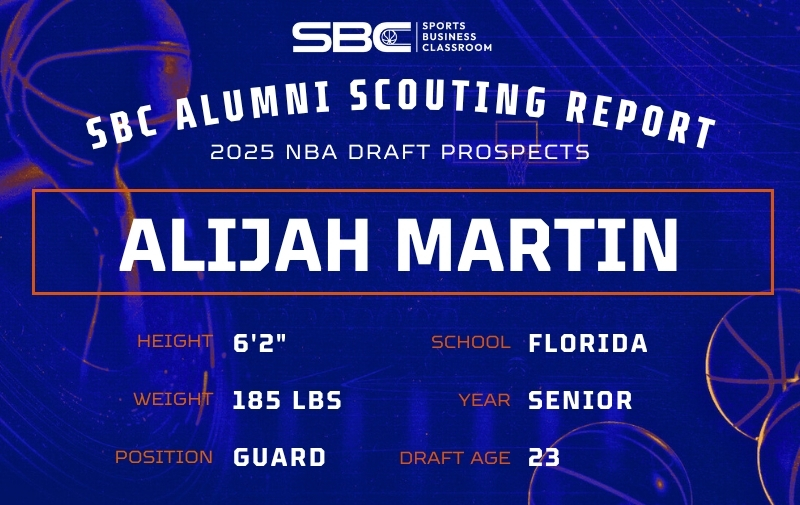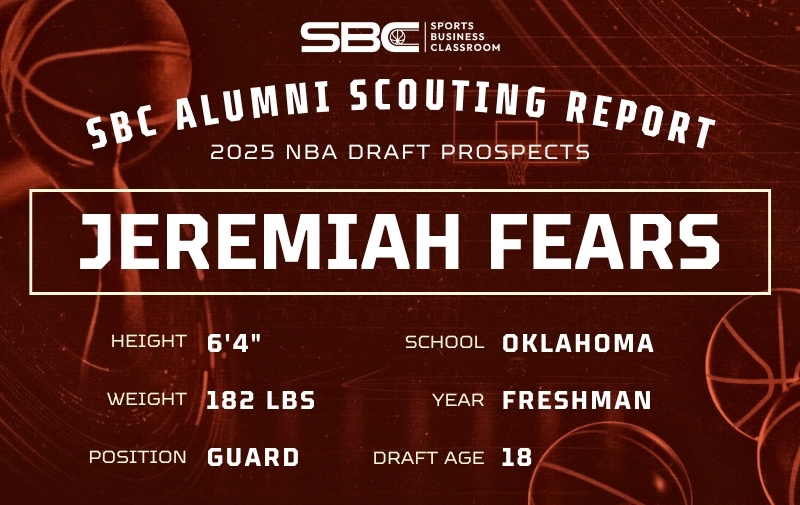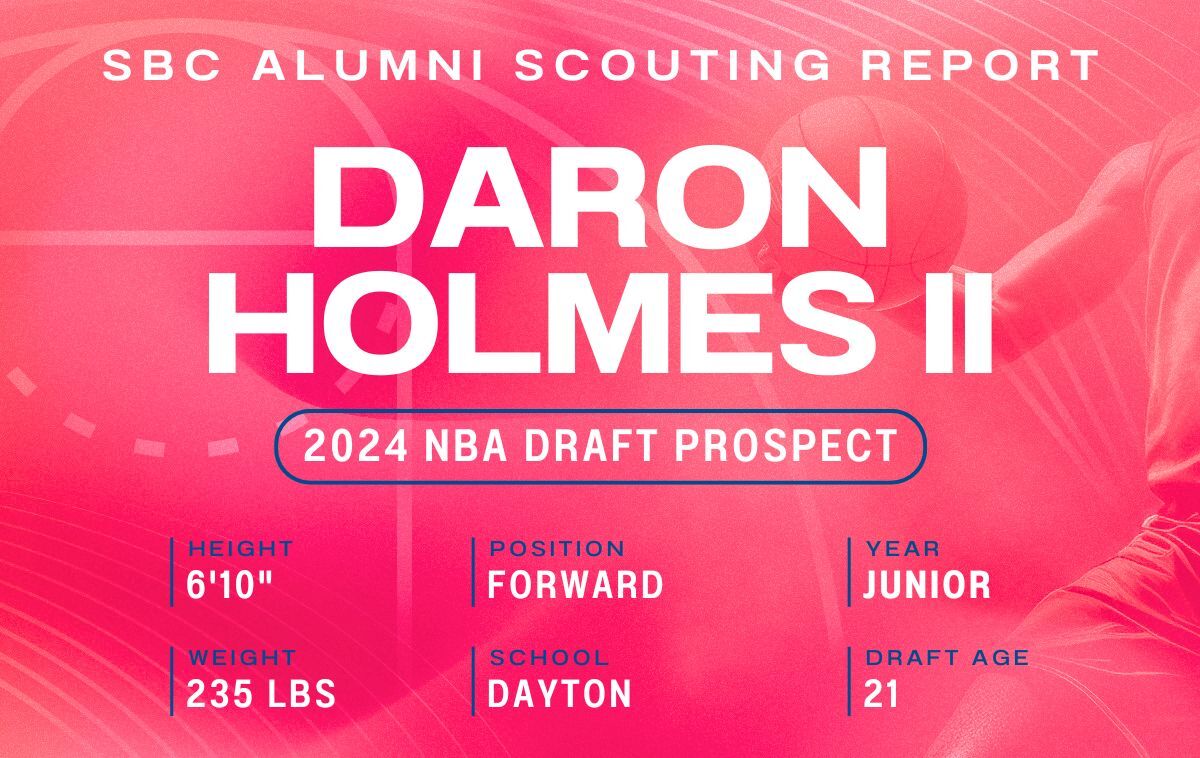
[The following scouting report is part of a series on potential 2024 draft prospects from Sports Business Classroom alumni. The initial report is from the 2022-2023 season, but the player withdrew from the 2023 draft class. Updates based on the 2023-24 season are at the bottom.]
DaRon Holmes II
Frame: 6’10”, 235 lbs
Position: Forward/Center
School: Dayton
2024 Draft Age: 21
Defense
Holmes is an active defender, leading his team in blocks and fourth in steals per game. He was willing to both defend along the perimeter and battle inside against opposing bigs. His block percentage ranked 29th of 111 Division I centers who played at least half of their team’s minutes. Of those 28 players ranked ahead of Holmes, ten had a better steal percentage, and just three committed fewer fouls per 40 minutes.
An enticing combination of power and finesse allows Holmes to defend well without fouling, hold his own against strong post-up players, and disrupt wings and guards by the three-point line. Holmes can switch through all five positions while maintaining good ball pressure and providing weakside help. Utilizing good fundamentals by keeping his hands straight up enables Holmes to contest shots on the perimeter and post moves down low.
His defensive rebounding percentage of 16.9, ranked 77th of the 111 players mentioned above, may be cause for concern but may be attributed to Holmes’ defensive aggression along the perimeter. Nevertheless, Holmes still averaged over eight rebounds per game, second on the team, and recorded 12 double-doubles.
Holmes was one of just six Division I players who played at least 50 percent of their teams’ minutes to have a block percentage above 6.5, a steal percentage above 1.4, and commit fewer than 2.5 fouls per 40 minutes. Of these five, Holmes was the only underclassman, demonstrating his high defensive IQ and production despite his age.
- At the 6:45 mark, Holmes switches onto a guard at the top of the key, deflects a pass to his teammate, runs the floor, and finishes strong against two defenders.
- 7:05, Holmes holds his own in the post, reaches without fouling, then keeps his arms straight up to block a shot.
- 7:43, Holmes picks up a guard along the perimeter, doesn’t bite on pump-fakes, blocks the shot, and proceeds to run the court the other way.
Looking Ahead
Holmes’s NBA potential as a starting big relies on improving his jump shot, which could open a starting forward/center position later in his rookie season in the right situation.
Holmes’ game translates well for the modern NBA; he can switch through all five positions, defend the lob, and run the floor on fast-break opportunities. As a weaker rebounder than many other prospects, Holmes’ draft potential will rely on his ability to defend and project as a stretch four or five.
Playing against just three high-major Division I programs this season, it remains to be seen how Holmes matches up against more NBA-caliber players. The three games occurred within the first month of the season, but in these games against NC State, Wisconsin, and Virginia Tech, Holmes averaged 13 points, 6.7 rebounds, 0.7 blocks, and 0.7 steals on a 43.8 percent field goal percentage, all losses.
While Holmes’ game still needs time to develop, the framework is there for Holmes to become a perimeter threat and offensive focal point. He’s patient in the post, can back down/rise above many forwards, and use his athleticism to face up and drive past paint defenders. Holmes has a decent shooting stroke, which should only improve, just as it has in college. His defensive versatility will earn him playing time as a backup big, and if Holmes can take advantage of his offensive opportunities, he may emerge as one of the elite big men from this draft class.
—Jordan Silbert
Update
Holmes had a prolific Junior season, earning the Atlantic 10 Conference Player of the Year and Defensive Player of the Year award. He upped his averages in all five major statistical categories, showing more willingness to step out beyond the arc with increased attempts (38.6 percent on 2.5 attempts from 31.6 percent on 0.6 attempts). Holmes also improved his free throw attempts and percentage from 6.9 and 66.9 percent to 8.8 and 71.3 percent. He has improved at making quick reads off the short roll and from the post position (1.7 assists to 2.6). Holmes remains a versatile scorer who can roll or pop off a screen, post up and run the floor hard for easy baskets. Sometimes, he is out of control driving to the basket and should focus on finishing around the rim, where he shot 74.1 percent.
Holmes has improved his defensive rebound percentage from 16.8 to 23.7, but he needs to be more attentive and physical in his box outs, especially against NBA-caliber bigs. He can switch out onto guards and protect the rim. His high motor often turns defense into offense for his team, and he has good discipline in not jumping on pump fakes. Holmes showed scheme versatility and can play in a drop, switch or hedge and get back to his man.
Holmes has dramatically improved every year of his career and will likely be able to contribute at the NBA level immediately. He must show that his jumper is reliable, but his increased three-point and free-throw percentages indicate that the growth is real. His physicality will be tested early on against NBA bigs. Holmes’ high motor and two-way ability should help him stick in the league.
—Diego Torres



